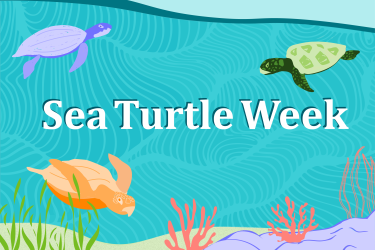NOAA Fisheries has released the Recovering Threatened and Endangered Species Report to Congress. It summarizes our’ efforts to recover all transnational and domestic species under our jurisdiction from October 1, 2020 through September 30, 2022. This report summarizes the status of each species that has or will have a recovery plan, the status of the recovery plan, and the completion date for the last 5-year review.
We are adding the endangered Rice’s whale to the Species in the Spotlight initiative. We listed the Rice’s whale, previously known as the Gulf of Mexico Bryde’s whale, as an endangered species under the Endangered Species Act in 2019. This will bring greater attention to the species and marshal resources to save this highly at risk species.
Species in the Spotlight Conservation Efforts
The report also highlights recovery progress for species identified in the Species in the Spotlight initiative, a strategic approach to endangered species conservation. It focuses agency resources on species for which immediate, targeted efforts can be taken to stabilize their populations and prevent extinction.
Our 2023 Partners in the Spotlight have made a profound difference for the Species in the Spotlight and deserve special recognition for their exceptional conservation efforts.
Status of Recovery Plans
During the 2 years covered in this report, we managed 99 domestic (including some transnational) and 66 foreign species, including:
- Salmon
- Sturgeon
- Sawfish
- Sharks
- Rays
- Mollusks
- Sea turtles
- Corals
- Marine mammals
In this report, we address 99 transnational and domestic species for which a recovery plan has or will be developed. Of these species, 58 had final recovery plans and 35 had plans in development. We have not started recovery plans for six species.
The status of these 99 species was:
- 23 were stabilized or increasing
- 13 were declining
- 22 were mixed, with their status varying by population location.
- 41 were unknown, because we lacked sufficient trend data to make a determination
We delisted two species based on new information indicating they do not meet the definition of a species under the Act and do not qualify for listing:
- Siderastrea glynni: listed as endangered on November 6, 2015; delisted on January 31, 2022
- Johnson’s seagrass: listed as threatened on October 14, 1998; delisted on May 16, 2022
Read the biennial report (PDF, 78 pages)
Recovery of Species
Recovery is the process of restoring species listed under the Endangered Species Act to the point that they no longer require ESA protections. A recovery plan serves as a road map for species recovery—it lays out where to go and how to get there. Without a plan to organize, coordinate, and prioritize recovery actions, these efforts may be inefficient, ineffective, or misdirected. Recovery plans are guidance documents—they are not regulatory. The Act clearly envisions them as the central organizing tool guiding each species’ progress toward recovery.
Learn more about the recovery of species under the ESA
Partnerships for Recovery
Recovering threatened and endangered species is a complex and challenging process, but one that offers long-term benefits to the health of our environment and communities.
Recovery actions may require one or more of the following:
- Restoring or preserving habitat
- Minimizing or offsetting the effects of actions that harm species
- Enhancing population numbers
They also provide communities with healthier ecosystems, cleaner water, and greater opportunities for recreation.
Many partners fund and implement the recovery actions discussed in this report. Partnerships with a variety of stakeholders are critical to achieving species recovery goals. Our partners in these efforts include:
- Private citizens
- Federal, state, and local agencies and tribes
- Interested organizations
NOAA Programs Funding Recovery Actions
Projects funded through these programs often address priority actions identified in recovery plans. They make important contributions to the recovery of listed species.
Species Recovery Grants to States Program
This program provides grant funding to partnering state agencies to support management, outreach, research, and monitoring projects that have direct conservation benefits for listed species.
Species Recovery Grants to Tribes Program
This program supports tribally-led recovery efforts that directly benefit listed species.
Pacific Coastal Salmon Recovery Fund
The fund recovers, restores, and conserves Pacific salmon and steelhead populations and their habitats.
Previous Reports to Congress
- 2018-2020 (PDF, 74 pages)
- 2016-2018 (PDF, 108 pages)
- 2014–2016 (PDF, 46 pages)
- 2012–2014 (PDF, 37 pages)
- 2010–2012 (PDF, 32 pages)
- 2008–2010 (PDF, 200 pages)
- 2006–2008 (PDF, 184 pages)
- 2004–2006 (PDF, 186 pages)
- 2002–2004 (PDF, 178 pages)
- 2000–2002 (PDF, 52 pages)
- 1998–2000 (PDF, 176 pages)
- 1996–1998 (PDF, 151 pages)
- 1994–1996 (PDF, 92 pages)
- 1992–1994 (PDF, 98 pages)
- 1989–1991 (PDF, 56 pages)


